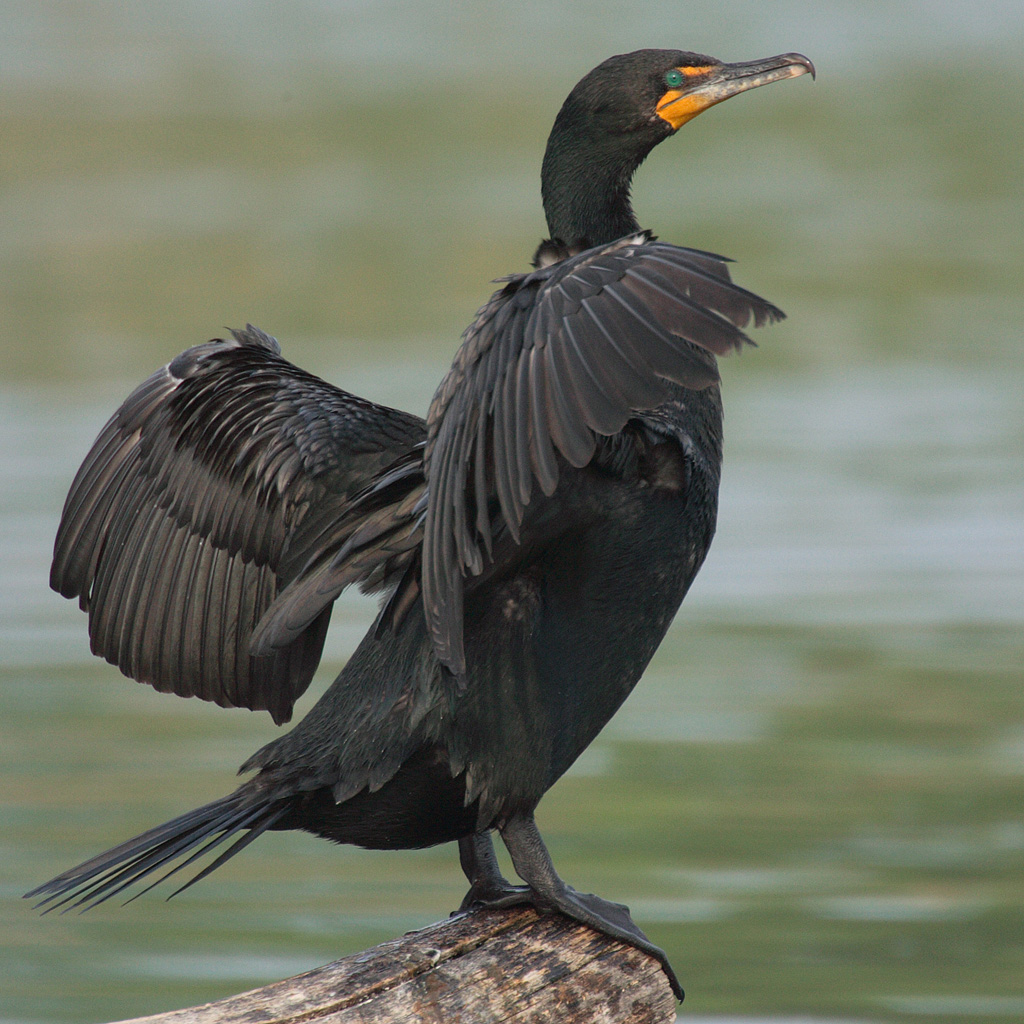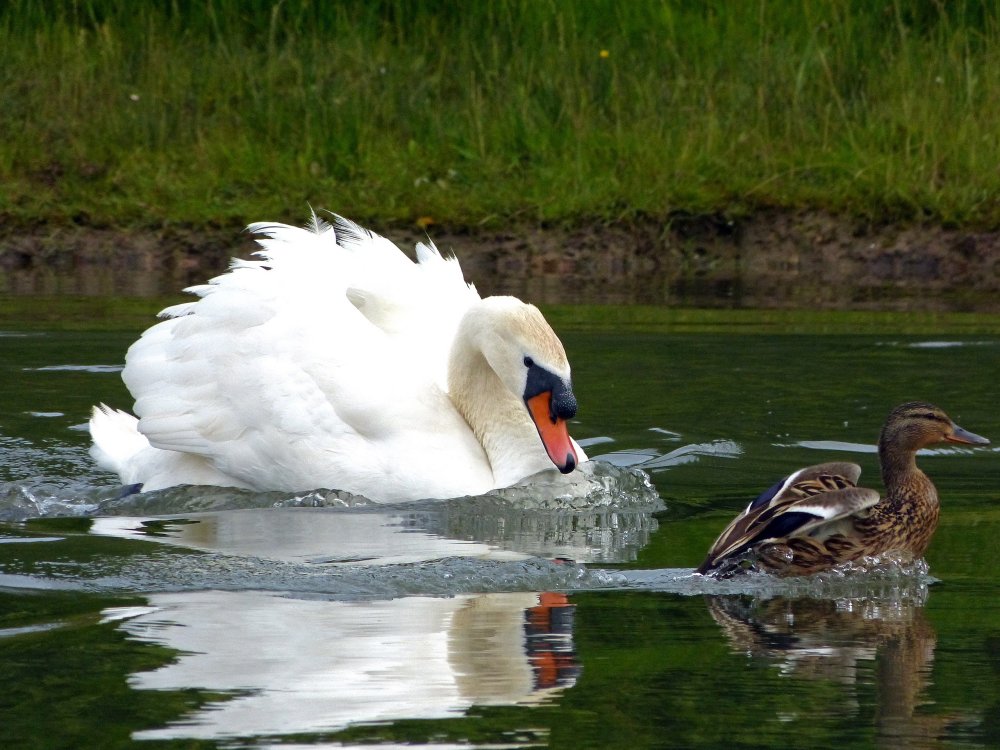Double-Crested Cormorant

This is a bird that you are almost guaranteed to see on any kayaking excursion. This is because they are very common, and not very waterproof. After diving underwater, they need to dry their sodden feathers in the sun, as the one above is doing. You can often get pretty close to them at these times.
Cormorants are excellent swimmers and catch fish by chasing them down underwater rather than diving on them from the air. They seldom stay down longer than you or I could.
The double-crested cormorant is a large waterbird with a stocky body, long neck, medium-sized tail, webbed feet, and a medium-sized hooked bill. It has a body length of between 28" - 35" long, with a wingspan of between 45" - 48". Double-crested cormorants weigh between 2.6 - 5.5 lb. Males and females do not display sexual dimorphism.
This species has dark-colored plumage with bare supra-loreal skin and gular skin that is yellow or orange. An adult in breeding plumage will be mostly black with the back and coverts being a dark grayish towards the center. Nuptial crests, for which the species is named, are either white, black, or a mix of the two. These are located just above the eyes with the bare skin on the face of a breeding adult being orange.
A non-breeding adult will lack the crests and have more yellowish skin around the face. The bill of the adult is dark-colored. The double-crested cormorant is very similar in appearance to the larger great cormorant, which has a more restricted distribution in North America, mainly on the Canadian maritime provinces; it can, however, be separated by having more yellow on the throat and the bill.

The plumage of juvenile double-crested cormorants is more dark gray or brownish. The underparts of a juvenile are lighter than the back with a pale throat and breast that darkens towards the belly. As a bird ages, its plumage will grow darker. The bill of a juvenile will be mostly orange or yellowish.
-- Wikipedia
The Great Cormorant may also be seen in this area. This is a similar but much larger bird with a more-yellow face. Unless you're a real bird fanatic, you probably will never know when you've seen one. The Great Cormorant is almost worldwide in distribution - from the east coast of North America to Europe, Africa, Asia, and Australia, all the way to New Zealand.
